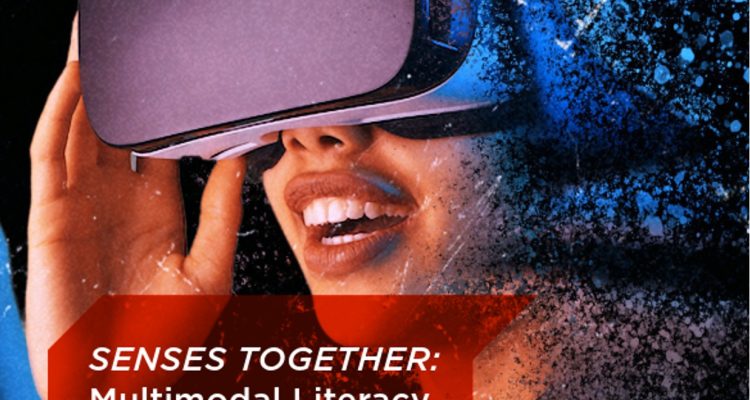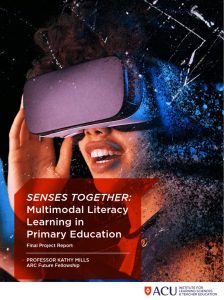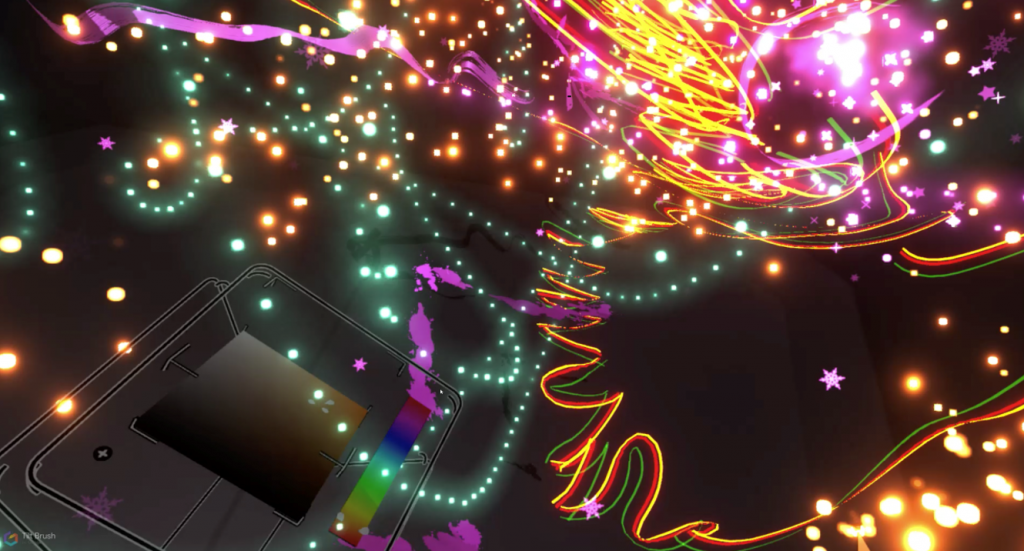
The Senses Together project: Final project report and information video
 The Senses Together project is a Future Fellowship project, led by Professor Kathy Mills, and funded by the Australian Research Council. Senses Together explored how students use different senses together for multimodal literacy. Multimodal literacy is about students creating and responding to texts across different media using words, images, and sound. The focus was on helping children learn with their senses and with new technologies in schools.
The Senses Together project is a Future Fellowship project, led by Professor Kathy Mills, and funded by the Australian Research Council. Senses Together explored how students use different senses together for multimodal literacy. Multimodal literacy is about students creating and responding to texts across different media using words, images, and sound. The focus was on helping children learn with their senses and with new technologies in schools.
Our recently published report, Senses Together: Multimodal Literacy Learning in Primary Education: Final Project Report, prepared by Kathy Mills, Elizabeth Heck, Alinta Brown and Patricia Funnell, highlights a shift in literacy studies from a traditional focus on the visual to a recognition of the importance of other senses in communication. As we note in the report, while visual elements have historically taken precedence, this perspective is evolving to embrace the multisensory nature of everyday literacy practices. Effective communication in the 21st century relies on sensory orchestration, uniting various senses for a holistic literacy learning experiences. This initiative has contributed to highlighting innovative sensorial education in diverse settings, such as primary schools, digital labs, and art museums. The report covers the various phases of the project, with noted outcomes and insights generated from this work including the concepts of transmediation, embodiment, and the creation of a unique touch typology in the context of multimodal literacy learning environments.
We have also recently produced a series of project information videos highlighting key aspects and outcomes from this research project. An example of one of these videos and further details are summarised below.
- Integration of Technology: The project integrated various media like iPads, virtual, mixed and augmented reality technology, along with traditional tools like paper and pencils, to provide students with a broad range of sensory and multimodal experiences for literacy learning.
- Virtual Reality and Transmediation: The use of virtual reality was explored to create vivid and immersive images, and it emphasised the concept of “transmediation,” where meaning can be shifted across different modes.
- Mixed Reality Storytelling: The project used mixed reality storytelling to create new expressions of meaning-making.
- Examples of Student Activities: Students engaged in various activities such as travelling through the solar system, reimagining ancient Roman artifacts, and enlivening virtual public spaces with street art. They also used 3D smart glasses for digital storytelling and interacted with 3D models of the solar system using augmented reality.
- Importance of Technology Integration: The project highlighted the need for the genuine integration of technology into the curriculum, emphasising the use of pedagogies to make the most of educational technologies.
One of the many wonderful student created virtual images from the study.
This project aimed to enhance students’ literacy skills by incorporating multiple sensory experiences and modern technologies into the learning process, ultimately enriching their understanding of various subjects and media.
We look forward to sharing further details and applications from the project report, and please see our blog for earlier news about project insights and outcomes.

